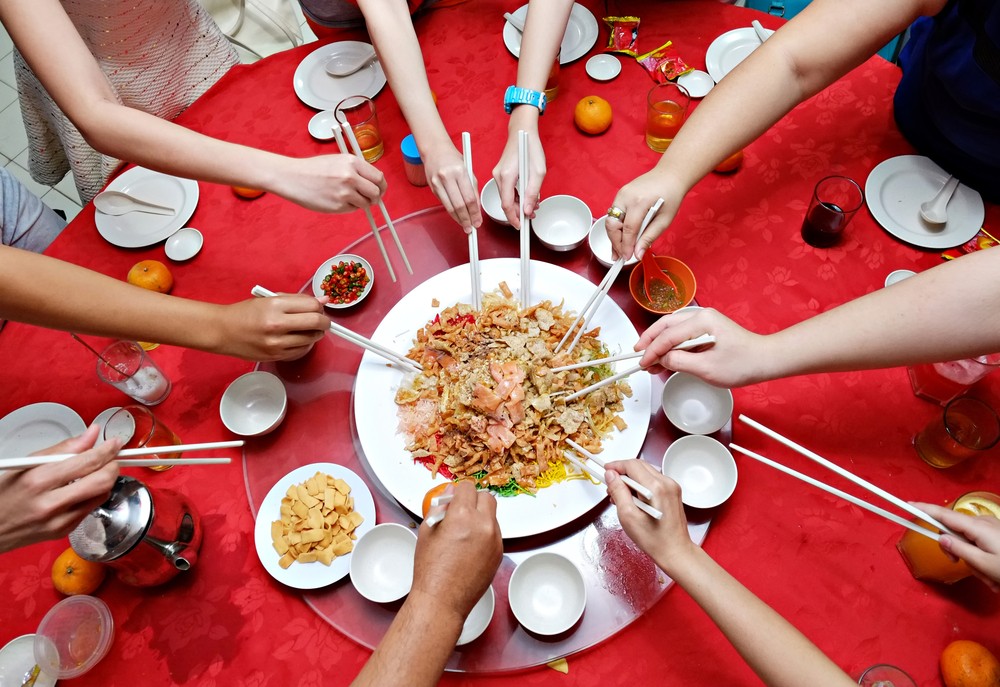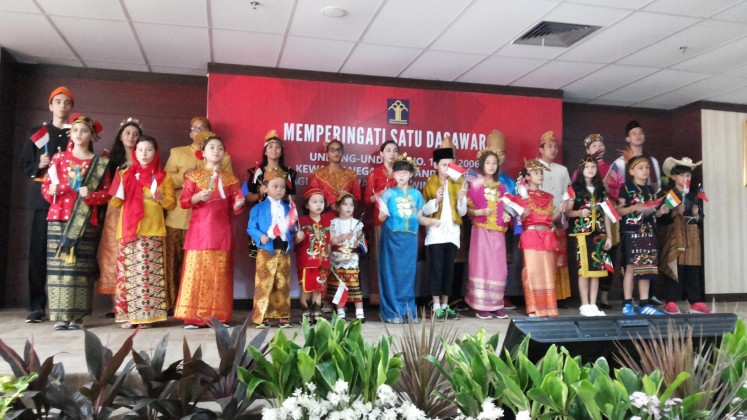Chinese New Year delicacies: Positive wishes on the dining table
Food is the centerpiece of every celebration, especially in Chinese New Year festivities. Customary dishes served to be enjoyed by the whole family have positive meanings and philosophies behind them.
Change Size
 Held of the eve of Chinese New Year, reunion dinners are an important occasion for Chinese families. (Shutterstock/File)
Held of the eve of Chinese New Year, reunion dinners are an important occasion for Chinese families. (Shutterstock/File)
F
ood is the centerpiece of every celebration, especially in Chinese New Year festivities. Customary dishes served to be enjoyed by the whole family have positive meanings and philosophies behind them, as reported by Antara news agency.
Yae sang
This colorful salad is a feast for the eyes, served with raw fish, plum sauce and spices. The customary Chinese New Year salad is normally served in a big portion and mixed with chopsticks by everyone at the table. The mixing process is one of a kind, as each and every participant is expected to raise their chopsticks as high as possible. According to the belief, the higher the chopsticks, the greater the prosperity in the year to come.
Nian gao
Known to Indonesians as kue keranjang (basket cake), nian gao has a sticky texture, similar to local dodol (traditional sticky candy). The sticky texture is believed to represent the hope of bringing people closer. Traditionally, nian gao has a dark brown color and round shape. However, in recent years, new variations of nian gao have begun to catch the public’s attention with various shapes and colors.
Read also: Feng shui masters predict claws out in Year of Dog
Tea egg
Similar to a regular hardboiled egg, the tea egg is actually a boiled egg with tea leaves added to the boiling water to give the egg a different color and aroma. When the egg is half-boiled, the shell is slightly cracked with the back of a spoon so the water can seep inside. The tea egg represents much-wanted fertility upon greeting the New Year.
Mandarin oranges
The fruit’s orange color is seen as the representation of gold, which represents wealth.
Siu mie
This noodle dish is one of the customary and compulsory dishes to be consumed at Chinese New Year celebrations. Siu mie features long strings of noodles, which represent long life, prosperity and happiness. When eating siu mie, one must not cut the noodle with the teeth. Aside from noodles, siu mie is also accompanied by vegetables and seafood.
Read also: Stubborn Year of the Dog calls for creativity and flexibility
Milkfish
Chinese-Indonesians are accustomed to having milkfish as one of the traditional Chinese New Year dishes, as milkfish are believed to represent luck. Fish is a compulsory dish at the New Year, as the word “fish” is pronounced the same as “wealth” in Mandarin. It is hoped that consuming fish will increase prosperity.
Layered cake
Layered cake is made by layering ingredients, and this symbolizes the wealth that is hoped to come in stacks in the coming year. (asw)









